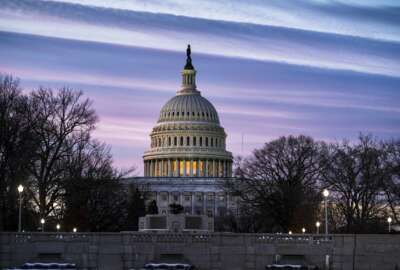Congressional leaders: DC’s subway needs improvement
By MEREDITH SOMERS Associated Press WASHINGTON (AP) — Congressional leaders said Friday that an electrical malfunction that filled a Metro tunnel with smoke...
By MEREDITH SOMERS
Associated Press
WASHINGTON (AP) — Congressional leaders said Friday that an electrical malfunction that filled a Metro tunnel with smoke last month, killing one person and injuring dozens, should be a wakeup call for the D.C.-area transportation system.
Members of a joint subcommittee said miscommunication and malfunctioning equipment were no excuse for passengers being trapped on a dark, smoky train car for 30 minutes.
“Think about the cause of this tragedy,” said Del. Eleanor Holmes Norton, Washington’s nonvoting Congressional member. “Think about the fact we’re dealing with what everybody would regard as the ABCs. Being able to communicate from the surface to the ground, making sure the smoke goes the right, rather than the wrong, way. I can think of nothing worse than being smoked to death, underground, in a subway. That’s what happened here.”
During the Jan. 12 electrical malfunction, a Virginia-bound train stalled in a tunnel near the busy L’Enfant Plaza station during early afternoon rush hour. But instead of pushing smoke out of the subway tunnel, ventilators actually pulled it toward the train, according to a federal investigation. Two of four ventilation fans that could have drawn smoke away from the train were broken or stopped working during the incident, investigators said. Also, the train operator did not immediately shut off the train’s own ventilation system, which began pulling smoke into the cars.
Passengers were trapped for about 30 minutes while they waited for emergency responders to arrive.
Carol Glover, 61, of Alexandria, Va., was killed. It was the first fatality aboard Washington’s subway system since a 2009 crash that killed eight passengers and a train operator. Glover’s two sons have filed a $50 million lawsuit against Metro.
Initial reports from D.C. Fire and EMS show first responders arrived at the station within seven minutes of the first call for help. Once on scene, however, firefighters found that their radios had trouble working below ground.
Edward Mills III, an assistant fire chief with D.C. Fire and EMS, defended his first responders for their reaction time and their courage in entering a dark, smoke-filled tunnel without a complete report on the emergency.
“Let me make this clear,” Mills told the subcommittee Friday. “Our members would not have been able to respond to that incident, overcome the many challenges they faced that day, a lack of information, inability to communicate, had they not received proper training in years past.”
Gerry Connolly, a northern Virginia Democrat, said the blame lies with management. Connolly said he could not understand why more than a decade after Sept. 11, when the region vowed to maintain a uniform set of standards for communication, it was still an issue.
“Here we are, 14 years later, and Mr. Mills is testifying that none of the radios worked underground,” Connolly said. “They did work on the surface, but his men and women couldn’t be communicated with, so they could have no incident report that had accurate information like where’s the train, how many people are on the train, what’s the condition of people on the train …”
Earlier this week, the safety board issued three urgent recommendations to Metro Authority concerning its tunnel ventilation system.
Metro is currently working its way through a list of 10 safety actions it said it would take following the incident. They include scheduling additional emergency drills and improving signs on the outside of rail cars so that first responders will know clearly which doors should be used in an emergency. Metro spokesman Dan Stessel said Friday that the signage has been designed and it is starting to be installed across the fleet.
Mortimer Downey, chairman of Metro’s board of directors, told the Congressional subcommittee that the transportation system has tested its ventilation system and is working with local jurisdictions to set up radio testing and reporting.
“I believe we’ve made real progress, but we cannot claim we are where we need to be,” Downey said. “In the face of this event, we need to do more and we will do more.”
Copyright 2015 The Associated Press. All rights reserved. This material may not be published, broadcast, rewritten or redistributed.
Copyright © 2025 The Associated Press. All rights reserved. This website is not intended for users located within the European Economic Area.






